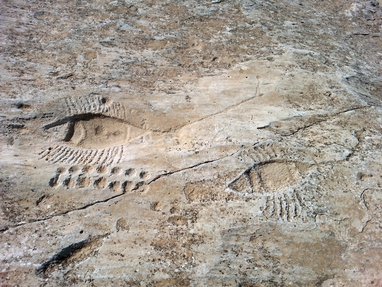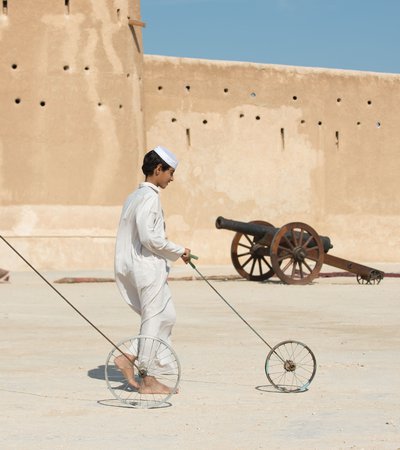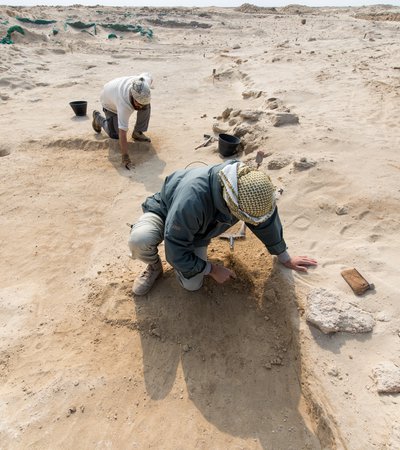Open to Visitors
Saturday–Thursday: 9am–5pm
Friday: 12.30–5pm
Free admission, no tickets required
Rock carvings, or petroglyphs, can be found at a dozen sites around the coast of Qatar. However, the greatest number of carvings can be found at Al Jassasiya, some 60 km north of Doha, on low limestone hills. Discovered in 1957, the site was systematically studied in 1974, when nearly 900 carved single figures and compositions were catalogued. These carvings, which are unique in composition and design among the petroglyphs of the Gulf region, consist mainly of cup marks in various arrangements, including rows, rosettes, and stars, but also of figurative carvings, such as boats, animal figures, and enigmatic symbols and signs.
It is believed that the cup marks were used for playing ancient board games, one of which may have been Mancala, which was known in Qatar as Al Haloosa or Al Huwaila. It has been suggested that the earliest rock carvings might date back to the Neolithic period. However, new evidence makes it seem more likely that they were made within the past 250 years.


